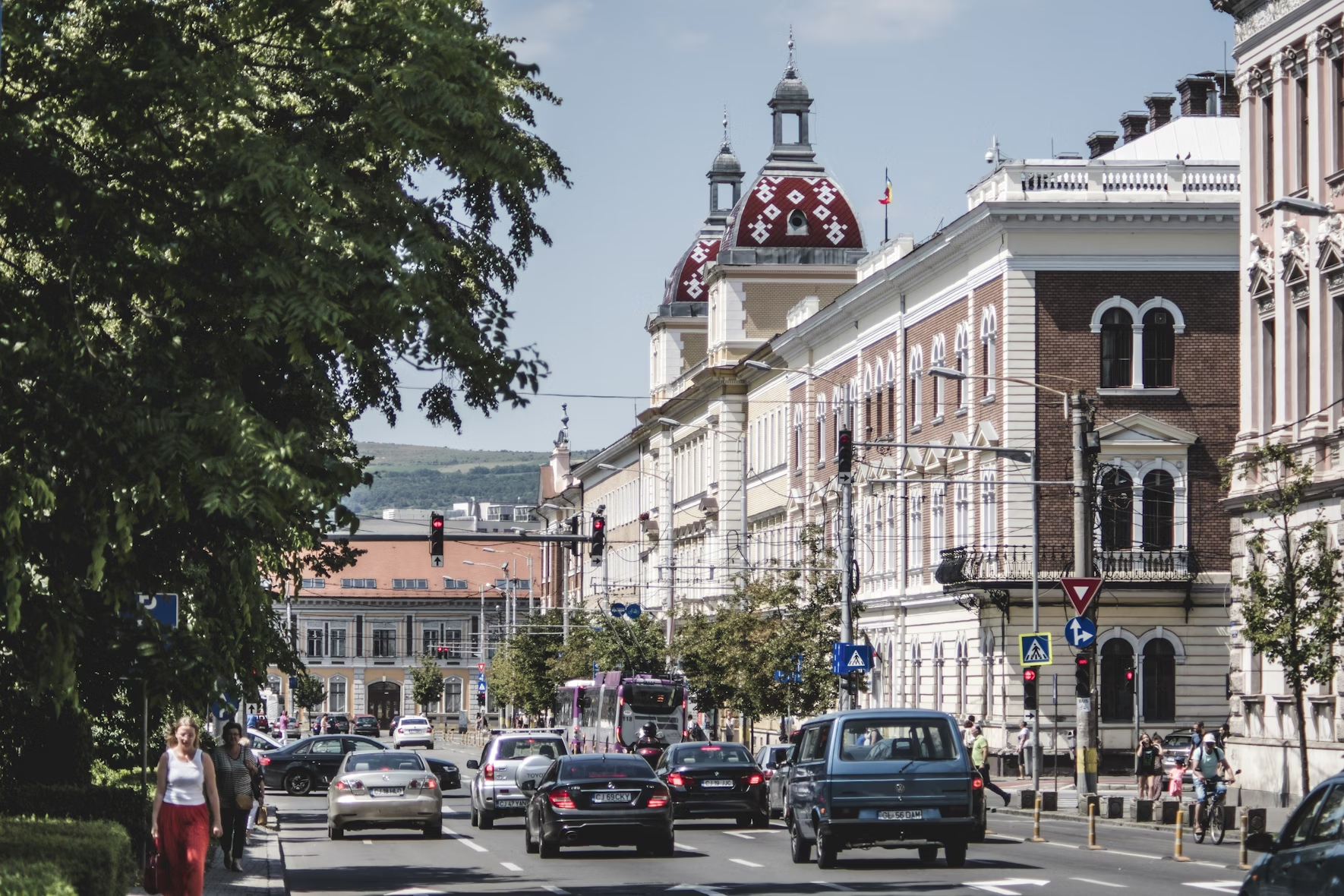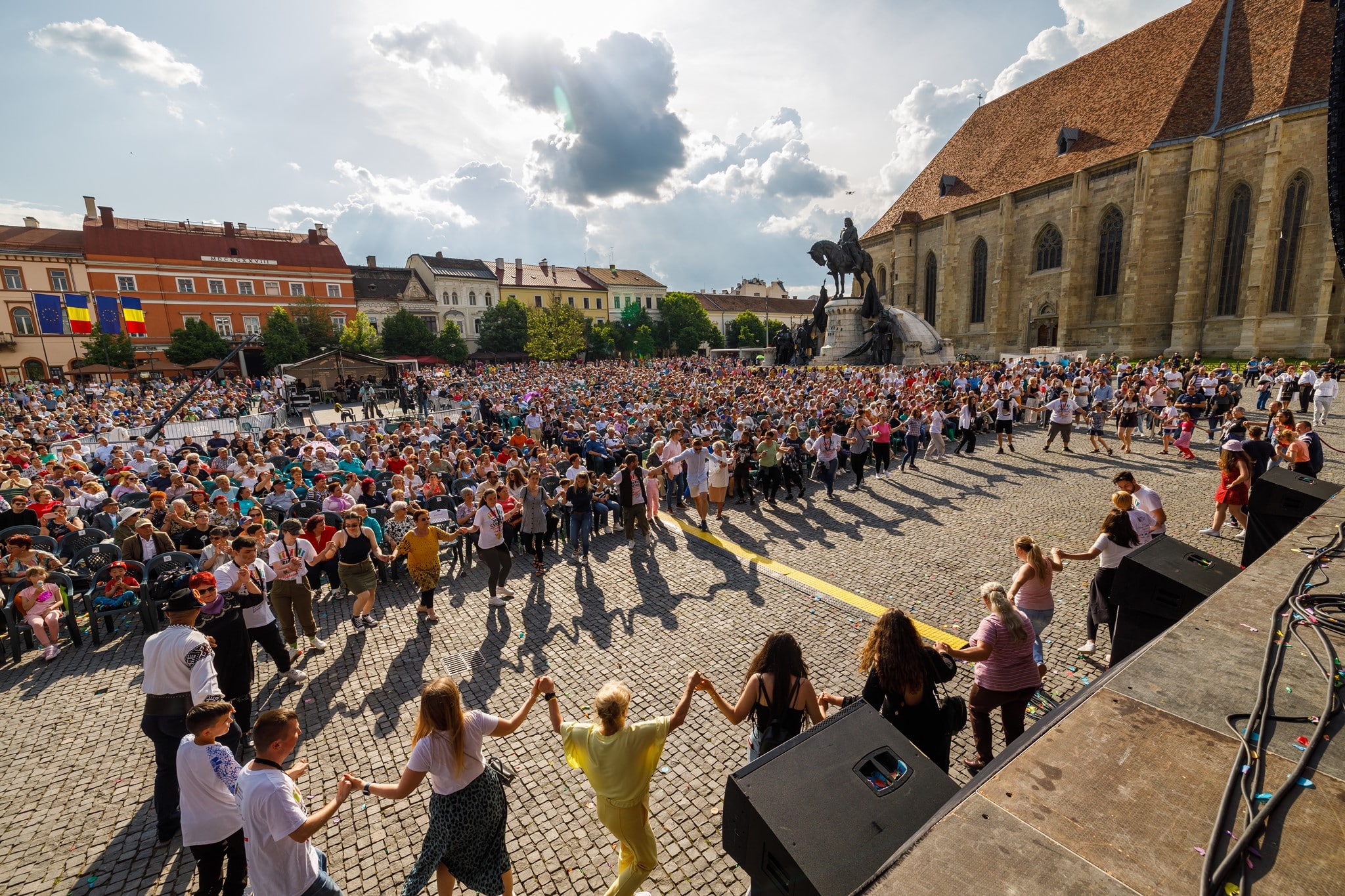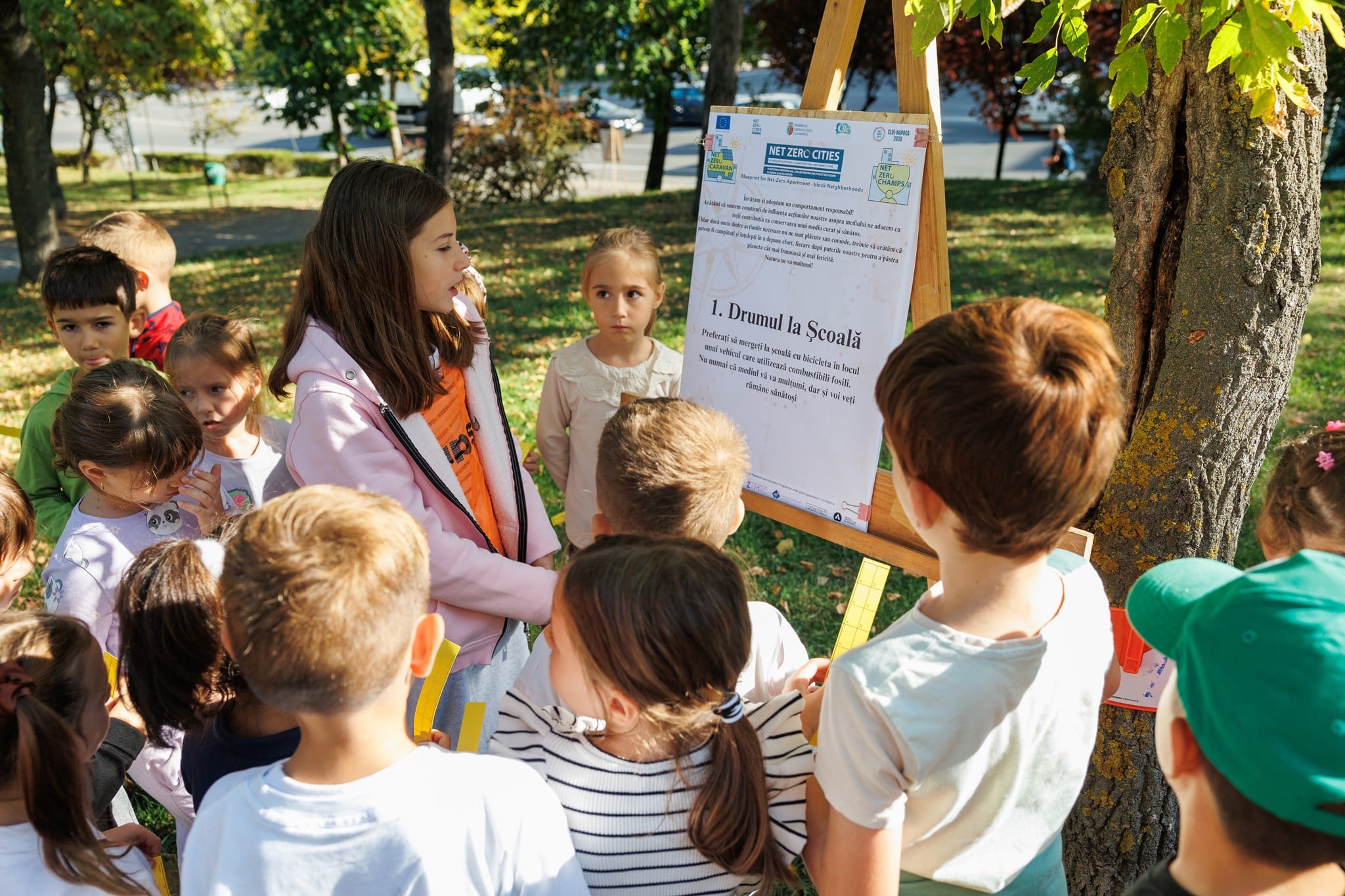Together for a greener future: Cluj-Napoca’s citizen-centric climate strategy

“We are doing it for them, so we need to do it together,” says Liviu Purtator from Cluj-Napoca City Hall. Involving citizens is one of the key elements in successfully driving climate transition in cities and in Romania, the city of Cluj-Napoca has implemented impactful activities to bring citizens on board to build a net-zero city together.
Cluj-Napoca, often simply called Cluj, is a vibrant city in north-western Romania and the unofficial capital of Transylvania. As a participant in the Pilot Cities Programme (PCP) facilitated by Climate KIC, Cluj is leveraging collaboration, citizen engagement and innovative strategies to create a sustainable future. We interviewed Liviu Purtator and Alexandra Poliec from Cluj-Napoca City Hall to learn more about the city’s most recent climate progress.
The municipality has been implementing climate neutrality initiatives since 2015. Green Cluj (almost 200 hectares of new or renewed parks and 100,000 trees planted), Walkable City (the 15 minute-city concept), the Zonal Urban Plan for the largest smart and green neighbourhood (Sopor), or the policy to organise international architecture and design competitions funded by European Regional Development Fund are some of the most notable ones.
A key pillar of Cluj’s strategy is putting citizens at the heart of climate action. “It’s not just about investments because the money will come. If not now, then in the next few years,” says Liviu Purtator, manager of Cluj-Napoca’s Pilot City activity and Councilor to the Mayor. “It’s about creating a community that understands and supports these changes because, ultimately, we’re doing it for them, with them.“
The activities introduced as part of the Pilot Cities Programme (PCP) build on earlier efforts to engage citizens in collaborative decision-making. In 2017, the local authority introduced the Civic Imagination and Innovation Centre to facilitate stakeholder involvement in the decision-making process, which has become a laboratory to test and develop various forms of collaboration and partnerships between local actors.
“We’re aiming to make the world a better, more sustainable place for everyone by cutting down on energy use, encouraging people to use greener forms of transport and getting citizens involved in climate action. That’s why we decided to get involved with NetZeroCities and the PCP Programme. It’s a great way for us to build on what we’ve already done and get more people involved. Plus, it connects us with other cities in Europe that are facing similar challenges”, says Purtator.
Mănăștur: A blueprint for net-zero neighbourhoods
At the heart of Cluj-Napoca’s climate ambitions lies Mănăștur, a dense, historically working-class neighbourhood that once served as a dormitory district during the communist era. With up to 5,000 residents per block, Mănăștur is a microcosm of the city’s broader energy challenges.
The project aims to transform Mănăștur into a model for sustainable living through reducing energy consumption, promoting green mobility, and fostering climate-conscious behaviour. “The first step is behavioural change,” explained Alexandra Poliec, who is responsible for the local implementation of European projects, like the EU Cities Mission. “Simple actions, like keeping your thermostat 1°C lower, can reduce both costs and emissions and make a significant impact on energy consumption.”
Six ways Cluj is involving citizens in climate action
Together with project partners, the municipality has organised numerous activities to inspire and raise awareness in the community:
- The Net Zero Caravan is a vibrant and engaging initiative that brings sustainability to life, sparking creativity, collaboration, and conversation wherever it goes. As it weaves through the lively streets of Mănăștur, the Caravan transforms everyday spaces into buzzing hubs of learning and innovation. From thought-provoking roundtable discussions on climate change and urban resilience to hands-on workshops exploring carbon footprints, energy communities, and even solar-powered tea-making, there’s something for everyone. Kids dive into the fun with the “Learning Hunt,” while high schoolers get inspired to redesign their neighborhoods with a focus on green spaces and community. The evenings come alive with local performances, delicious traditional food, and joyful social gatherings, celebrating the rich culture of the area. In partnership with the Urban Association, the Caravan creates a welcoming environment where everyone—young and old—can come together to share ideas, learn sustainable practices, and collaborate on building a greener, brighter future. 4o mini
- The project also features the creation of a cutting-edge Digital Twin—a dynamic digital tool that acts as a virtual mirror of the neighborhood, collecting real-time data on heating, water, and energy consumption. This innovative technology opens the door to powerful simulations that guide future projects and empower residents to see the impact of their sustainable choices. “With this data, we can craft scenarios that can be directly implemented in the neighborhood. It’s also instrumental in shaping mobility plans and helps citizens understand how small behavioral changes can make a big difference,” said Purtator. This smart tool is all about putting the power of sustainable living right at the fingertips of the community, making it easier than ever to envision and create a greener, more efficient future.
- The Participatory Budgeting model is all about empowering the community, with a special focus on enhancing the green spaces in the city. This initiative will be rolled out in three local schools, where students will submit their own ideas for projects. The goal? To create one impactful, low-budget project per school that will leave a lasting mark. “It’s about small investments with big results in the school environment,” said Purtator. According to Poliec, there’s a powerful vision behind this plan—shaping the minds of future generations to think sustainably. “If we can help children grow up with a mindset of climate neutrality, it will be much easier for their parents to join in. When kids take ownership of these projects, parents often follow their lead.” It’s a ripple effect of change, starting with the young ones and spreading throughout the whole community!
- Workshops for children: At the city’s Innovation and Imagination Centre, young minds are getting hands-on with recycling and turning waste into creative art, instilling eco-friendly habits from the get-go. “We invite children to discover how to recycle and transform used materials into something new—teaching them not to toss things away, but to reduce waste and recycle in the process. This approach will be extended to students and adults as well,” says Purtator. It’s all about sparking creativity and sustainability, empowering the next generation to make a positive impact on the planet.
- In collaboration with the Romanian Order of Architects, the city is also developing a series of policy recommendations with the aim of adapting the legal framework to facilitate climate neutrality investments. “If you’re a regular citizen who wants to install photovoltaic panels on your balcony, you’re out of luck. The legal framework doesn’t allow it. The same goes for a wind turbine in the small space in front of your block. We’re trying to get recommendations for policy changes to improve the policy framework and give citizens more options,” said Purtator.
- Citizen input is also gathered through public debates and ownership associations to ensure that the project aligns with community needs. “Our partner university conducted a survey to see how people reacted to the issue of climate neutrality and surprisingly, initial resistance from older residents has transformed into enthusiasm, thanks to visible cost savings from pilot retrofitting efforts. When people see that they can reduce the cost of living by 50-100 Euro monthly, they appreciate the path to climate neutrality”– said Purtator.
Lessons from the journey – A European connection for global change
Cluj’s path toward climate neutrality is a clear example of how collaboration can drive meaningful change, both locally and internationally. As Poliec highlights, “We’ve realized we’re not alone in facing these challenges. Learning from other cities and working together has been transformative. It connects us with Europe.” This interconnected approach is a core aspect of the work Climate KIC does with cities like Cluj through the NetZeroCities initiative, which facilitates sharing best practices and strategies for sustainability across Europe.
By being part of this network, Cluj has access to a wide range of successful models, from Mannheim to Nantes or Galway, allowing the city to avoid reinventing the wheel. “We can just adapt successful models to fit our local plans and implement them for the benefit of our citizens,” says Poliec. This exchange of knowledge and experience helps Cluj tailor its solutions to local needs while benefiting from the collective wisdom of cities that are facing similar climate challenges.
For Purtator, this collaboration not only boosts the city’s credibility but also strengthens its communication with residents and stakeholders. “International recognition of our efforts helps us communicate better with citizens and stakeholders. It creates a sense of shared purpose and momentum.” This sense of shared responsibility is critical as Cluj works towards its goal of reducing greenhouse gas emissions by 80% by 2030 and implements major infrastructure projects like the green-blue corridor along the Somes River and the new metro system.
Cluj’s vision of a green, digital, and resilient city is unfolding through these efforts, with the support of both local innovation and international collaboration. The city’s long-term transformation is not just a series of disconnected projects but part of a larger, global, systemic effort to create sustainable urban futures, with Cluj learning from and contributing to this broader movement.
This story is part of Climate KIC’s #LiveableCities Campaign 2025, which highlights our leadership in transforming cities across Europe into climate-resilient, just, and regenerative places. Through initiatives like NetZeroCities, CitiES 2030, Climathon, EIT Community New European Bauhaus and the Pilot Cities Programme, we support local governments and communities in creating scalable solutions to tackle climate challenges. By showcasing diverse approaches—from citizen engagement and innovative financing to sustainable mobility and urban heat mitigation—this campaign amplifies the stories behind the systems change we’re helping to orchestrate.
Sign up to our newsletter to learn more about our work.


